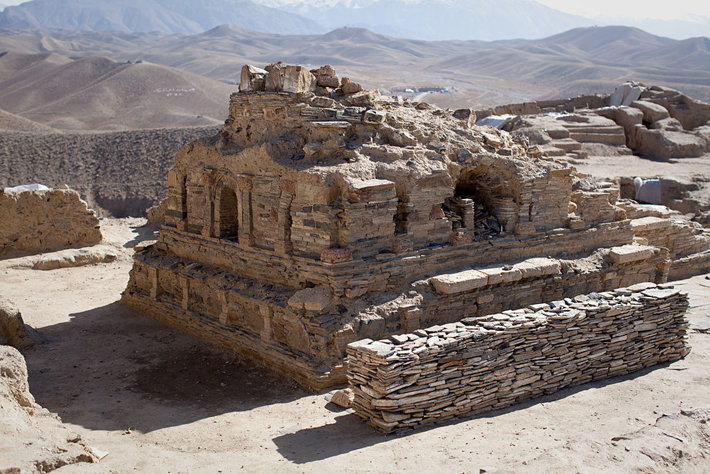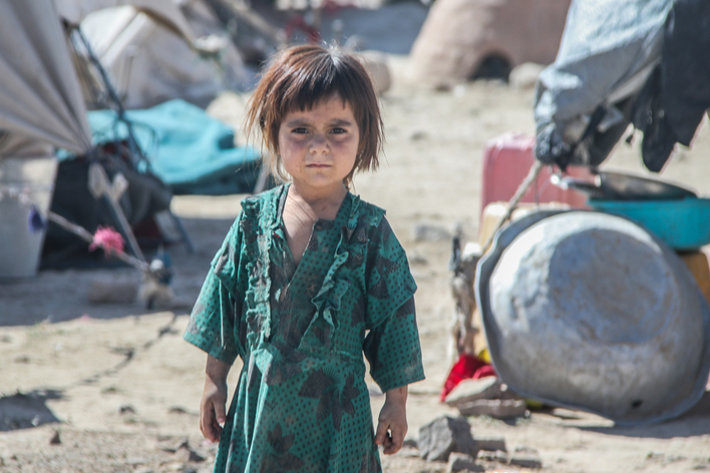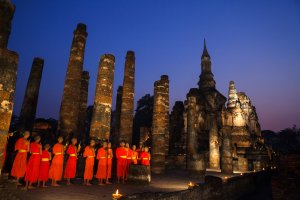Mes Aynak, an ancient Buddhist city containing monasteries, fortresses, and stupas (shrines), is in danger of being devoured by a Chinese copper-mining consortium.

Most of it believed to have been created 1,000 to 2,000 years ago, the city was once a vast metropolis structured around the extraction and trade of copper, which made it one of the most prosperous trade centers along the famed Silk Road that linked China to the West.
Over the years, archaeologists have excavated hundreds of Buddhist statues, ceramics, frescoes, coins and manuscripts from the region. Dwellings and administrative buildings have also been unearthed.
While most of the artifacts date from the 2nd to 9th centuries, archeologists have also found pottery from the Bronze Age, which predates the birth of Buddha.
Bastien Varoutsikos, an archaeologist for the French company Iconem, described Mes Aynak as one of the most beautiful and largest archaeological sites in the world.
On a gigantic mountain whose edges have been browned by the presence of the copper beneath it, Mes Aynak extends over 1,000 hectares (2,470 acres)—almost three times as large as New York City’s Central Park.
Archeological work on the city has been disrupted since the Taliban seized power in the summer of 2021.
In 2007, a Chinese mining behemoth, Metallurgical Group Corporation, led a state-owned consortium called MJAM, which signed a $3-billion, 30-year contract with the Afghan government to mine ore. But the project has been shelved over the past 15 years following financial and contractual disagreements between Chinese and Afghan authorities, coupled with Afghanistan’s lingering geopolitical insecurity.
Now, with international aid to Afghanistan halted and assets frozen when the Taliban seized power, the regime is eager to exploit new sources of revenue, which has prompted making the mining of Mes Aynak a priority. Both sides have demonstrated renewed interest in the project and talks on how to proceed have been underway.
In March, Associated Press quoted Hakumullah Mubariz, Taliban head of security, as expressing the intention of preserving the relics of Mes Aynak. But at the same time, it reminded readers that two decades ago, when the Taliban was in power, “they sparked world outrage by blowing up gigantic Buddha statues in another part of the country, calling them remnants of paganism that must be purged.”
Afghanistan’s acting Minister for Mining and Petroleum, Shahbuddin Dilawa, told Associated Press that his country has a firm intention to preserve the site, which would preclude open-pit mining—the cheapest and easiest method of pulling the copper ore from the ground—but which would also completely raze the site. The alternative route of underground mining, however, has been dismissed by the mining company as too costly and impractical. In the meantime, Afghanistan’s Culture Ministry has been called on to provide a plan to relocate relics from Mes Aynak, most likely to the Kabul Museum.
Located in Logar, a central Afghan province, Mes Aynak was forgotten for centuries until a French geologist rediscovered it in the early 1960s.
The city has been compared in size and significance to Pompeii in Italy and Machu Picchu, the site of ancient Inca ruins in Peru.
_______________
From its beginnings, the Church of Scientology has recognized that freedom of religion is a fundamental human right. In a world where conflicts are often traceable to intolerance of others’ religious beliefs and practices, the Church has, for more than 50 years, made the preservation of religious liberty an overriding concern.
The Church publishes this blog to help create a better understanding of the freedom of religion and belief and provide news on religious freedom and issues affecting this freedom around the world.
The Founder of the Scientology religion is L. Ron Hubbard and Mr. David Miscavige is the religion’s ecclesiastical leader.
For more information visit the Scientology website or Scientology Network.


